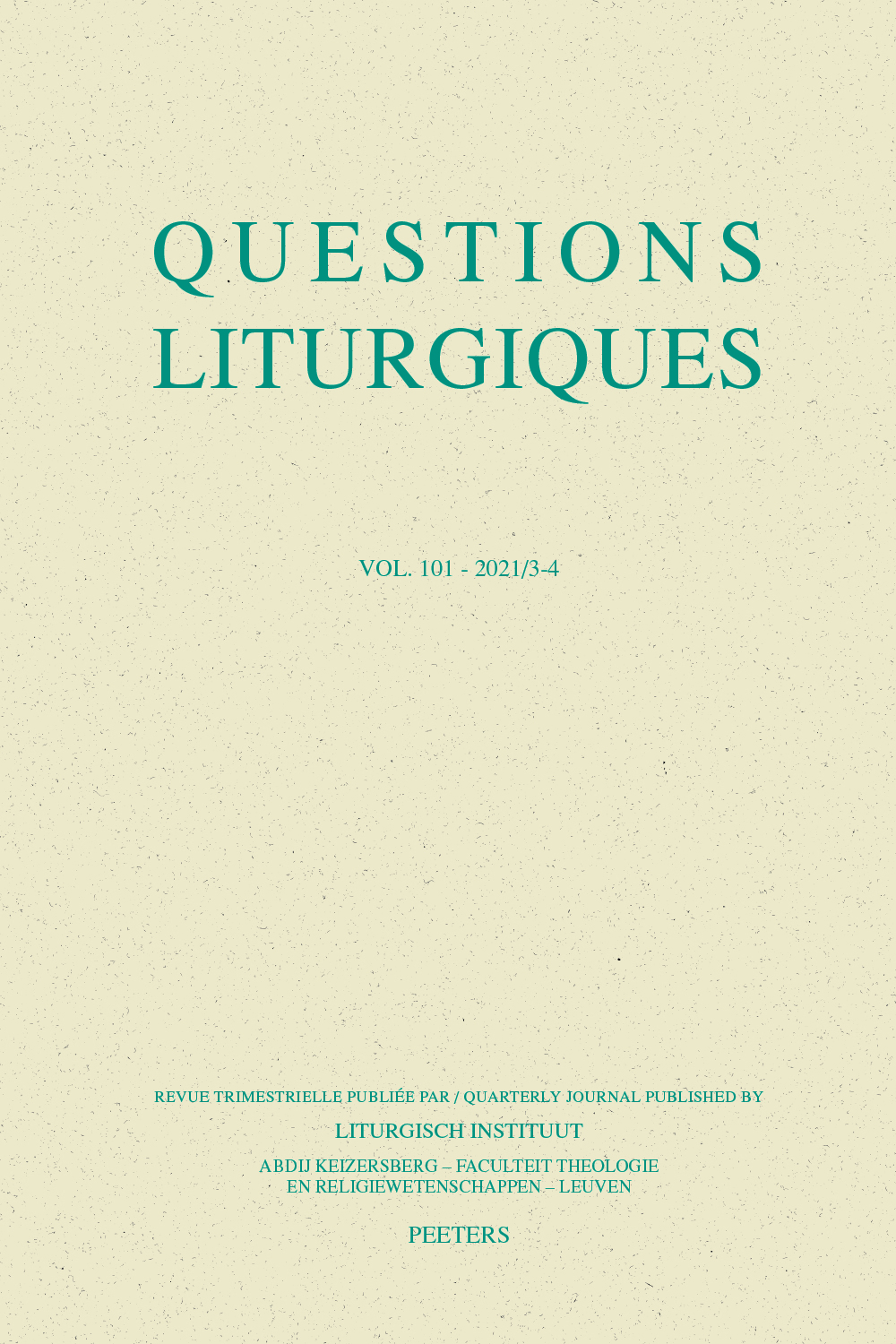 previous article in this issue previous article in this issue | next article in this issue  |

Preview first page |
Document Details : Title: Mass Antiphons and the Dialectic of Liturgical Genre and Translation Author(s): MCFARLAND, Jason J. Journal: Questions Liturgiques/Studies in Liturgy Volume: 102 Issue: 1-2 Date: 2022 Pages: 118-135 DOI: 10.2143/QL.102.1.3290879 Abstract : Translation is a key dimension of ongoing liturgical renewal and reform. In the 2010 English-language edition of the Roman Missal (title in italics), the translation process was guided by the Instruction Liturgiam Authenticam issued in 2001 by the Congregation for Divine Worship and the Discipline of the Sacraments. Though often and justly criticized, the document’s principles are useful and insightful in terms of the preservation and transmission of the ancient antiphon tradition of the Latin Rite. This paper delineates these principles, introduces the complex and often overlooked antiphon tradition, and analyses several key antiphons of the Roman Missal to explicate the importance of understanding the liturgical-textual genre of antiphons, and indeed any other liturgical text, in the process of translating Latin texts into the vernacular. In the dialectic of genre and translation, genre must be an equal partner. If not, crucial aspects of the tradition are eclipsed in vernacular editions of liturgical books and local liturgical praxis. La traduction est une dimension essentielle du renouveau et de la réforme liturgiques continus. Dans l’édition anglaise du Missel Romain de 2010, le processus de traduction a été guidé par l’instruction Liturgiam Authenticam publiée en 2001 par la Congrégation pour le culte divin et la discipline des sacrements. Bien que souvent et justement critiqués, les principes de ce document sont utiles et perspicaces en ce qui concerne la préservation et la transmission de l’ancienne tradition des antiennes du rite latin. Cet article décrit ces principes, présente la tradition complexe et souvent négligée des antiennes et analyse plusieurs antiennes clés du Missel Romain pour expliquer l’importance de comprendre le genre liturgique-textuel des antiennes, et en fait de tout autre texte liturgique, dans le processus de traduction des textes latins en langue vernaculaire. Dans la dialectique du genre et de la traduction, le genre doit être un partenaire égal. Sinon, des aspects cruciaux de la tradition sont éclipsés dans les éditions vernaculaires des livres liturgiques et dans la pratique liturgique locale. |
|


